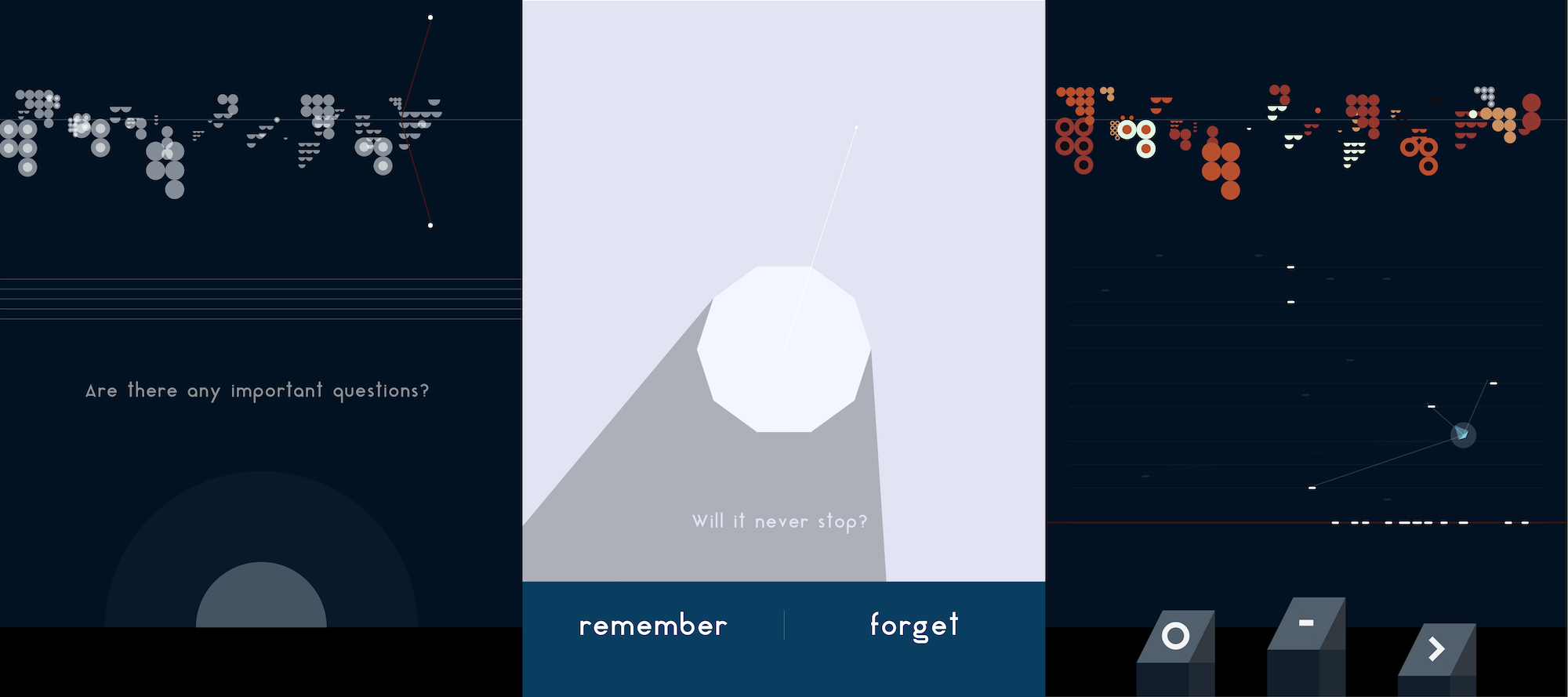Atlås is an anti game environment that generates music among a conversational cognitive space. As part of its existence, there are automatically generated tasks that are solved by machine intelligence without the need of human input. It also asks questions ad infinitum: questions that are dealing with presence, human cognition and imagination, corporate driven automatisms, advanced listening practices, silence.
Background
Atlås came to life as part of a post doctoral research project that is dealing with creativity, interaction and machine learning. Borrowed analogies have been introduced from games, visual music, musical instruments, mediated alienation and the act of play.
One component of the experiment is to introduce a narrative that is guiding through the listener through the whole experience. Chance operations are involved in this process: semi randomly selected questions are asked by the late 20th century composer John Cage. In fact, those questions are focusing on communication between humans, the environment and cognitive processes. As with the case of his music and legacy, the project concentrates on marginalized aspects of presence, amplifying the background and non intended cognitive processes to succeed in the composition. By applying this thinking into a downloadable app, mediated alienation of our networked society gains attention through a semi-ironic tautologist chat-bot philosophy context.
Another component of the experience is investigating the autonomy of algorithms and machine intelligence. The method involved in the sonic improvisation scene is called Reinforcement Learning, where a solution for a specific problem is defined and learnt from the constant dialect between one or more agents and their environment. Since these pre-trained agents are fascinating in terms of behaviour, choreography and rhythm, using them in such context, strange relationships can emerge between their skills and the cognition of the human player. The app is focusing on interacting with them: the user can help one of these agents achieving its goal, while constantly avoiding the other in achieving the same goal.

Screens from the environment
Technical Realization
The project is developed with free and open source tools with an educational aspect in mind. The main application is written in javascript, using the p5js library that is embedded into a regular Swift iOS application. This example template can be used to write and play with your own app using p5js within an iOS app. The sound synthesis is written in Pure Data, that is a useful graphical programming language to develop interactive sonic events. It can be integrated into all type of projects and applications using LibPd. This example template can be used to write and play with your own app using libPd within an iOS app.
Sources, inspirations
Most questions are originating from John Cage: Silence: Lectures & Writings, Digitized by the Internet Archive in 2012 with funding from Wellesley College Library. Read the full book online, for free here. The machine intelligence algorithm that is controlling the agents in the environment is written by Andrej Karpathy and you can download from here.
Features
- A Generative Musical Instrument
- Unintended Visual Components Representing Random Sounds
- Unstoppable Existentialist Questions asked after each iteration
- Senseless, hard to understand interface
- Anti Game Mechanics
- Vu Vei Mode
